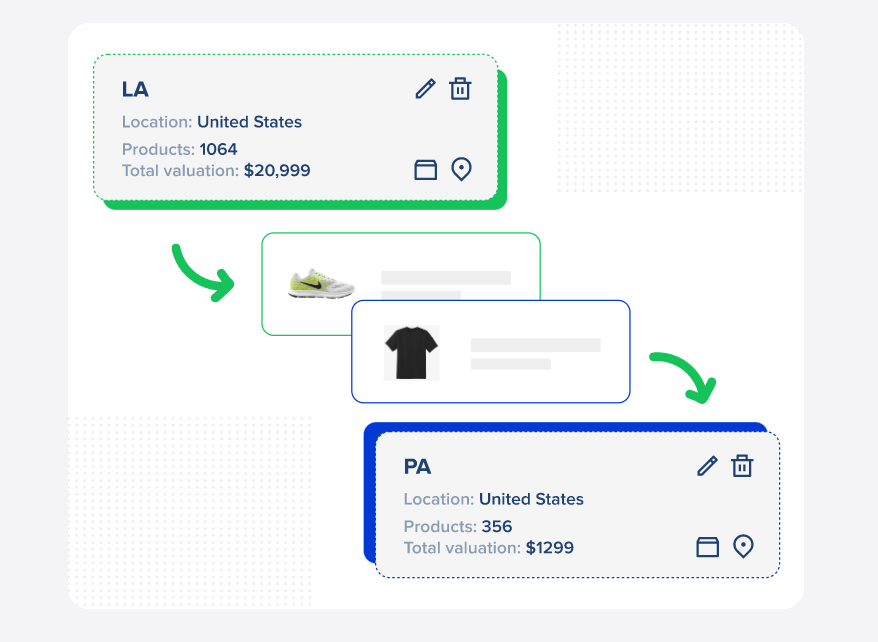As a business owner, you know that data is key to your success. eCommerce analytics can provide valuable insights, from understanding consumer behavior to improving your sales funnel. But with so many metrics and KPIs, it can be overwhelming to decide what data is worth tracking. So, what data should you be monitoring? And, more importantly, how can you track it all effectively? This article will look at the eCommerce analytics you need to be tracking, and we will explore how eSwap makes tracking this data straightforward. Without further ado, let’s get to it!

Big Data Management in eCommerce
The notion of big data has become a vital part of eCommerce in recent years. Big data is more than simply a collection of large data sets that can be difficult to process with traditional data processing applications.

While analyzing big data, companies should pay attention to the three essential Vs: volume, velocity and variety. Each has its unique characteristics, and eCommerce businesses should consider them to make the most of them. Let’s quickly skim through each of them:
- Volume – the first and perhaps the most apparent big data characteristic. eCommerce businesses receive a lot of customer data daily. The volume of eCommerce data businesses are having to process is constantly growing from terabytes to petabytes.
- Velocity – the speed at which eCommerce businesses receive this customer data. In other words, it’s the rate at which eCommerce data is generated and collected. eCommerce businesses need to process this data quickly and effectively to make real-time decisions.
- Variety – eCommerce businesses should also pay attention to the variety of data types they process. Unstructured data from texts, audio and video files, or social media platforms can be challenging to analyze. eCommerce businesses need the right tools and processes to make sense of this information.
eCommerce businesses rely on big data to make sound decisions about their future. Thus, if you are a retailer, you need to have a big data strategy in place to make the most of this opportunity. Here’s how the numbers can benefit your business:
Tracking eCommerce Trends
![]()
With e-Commerce ever-changing, it is necessary to stay on top of current trends. eCommerce analytics tools can help you do just that. With the right software, you can easily track eCommerce trends. Professional solutions also help retailers learn more about customer behavior and preferences, and make changes to their online stores.
Some of the eCommerce trends you can track using eCommerce analytics tools include:
- M-commerce – with most eCommerce traffic coming from mobile devices, optimizing your store for mobile users is crucial. eCommerce analytics tools can help you track mobile traffic and conversion rates, as well as identify any issues that need to be addressed.
- Social commerce – social media platforms play an increasingly important role in eCommerce. eCommerce businesses should use eCommerce analytics tools to track social media traffic and engagement, as well as identify relevant social media influencers.
- Voice commerce – voice search is becoming more popular alongside the rise of smart speakers. So, eCommerce analytics tools can help track this trend and optimize your website for voice search.
Customer Retention and Loyalty

Customer retention and loyalty are crucial components of any company’s success. eCommerce analytics tools can help track customer behavior and purchase patterns, and even predict churn risk. This information can then be used to improve customer retention efforts. This may include targeted marketing campaigns or personalized discounts. eSwap, for example, offers users deep analysis of order returns and abandoned carts. Using the right tools, sellers get an opportunity to improve their eCommerce business by increasing customer satisfaction and loyalty.
Inventory Management
Although inventory management may seem far from eCommerce analytics, it is still important for businesses to track their inventory levels. eCommerce analytics tools can help track product sales and demand, the sales performance of individual products, identify slow-moving or popular items, and forecast future demand.
Combined with eCommerce analytics, effective inventory management results in increased sales and customer satisfaction. Real-time updates on inventory levels and warehouse stock availability allow sellers to fulfill orders quickly and accurately.
Multichannel inventory management systems like eSwap offer users regular updates on inventory levels. Such platforms even allow managing multiple eCommerce channels from a single dashboard.
Customer Acquisition Costs
Acquiring new customers can be expensive, so tracking the cost of acquiring each new customer is crucial. Tracking this data manually can be a challenge and even impossible, as companies often use multiple marketing channels.
Still, the following formula will help you get preliminary estimations:
CAC = MCC / CA
CAC: Customer acquisition costs
MCC: Marketing campaign costs
CA: Total customers acquired
Product Performance

Product performance analytics involves collecting and strategically analyzing eCommerce data related to individual products. Advanced management tools can help track product performance, including click-through and conversion rates, average order value, and return rates.
eSwap provides its users with a comprehensive analysis of product performance, including sales trends and order returns segmented by product, customer and country. It’s also a perfect solution to avoid stockouts, overstocking and backordering issues, and ensure higher customer satisfaction rates.
Professional Approach to eCommerce Analytics
eCommerce businesses need to pay attention to the data they are collecting and analyze it effectively. eSwap offers its users a comprehensive and user-friendly platform for managing eCommerce analytics. Moreover, it helps businesses develop data-driven business strategies and improve their eCommerce success.
The three Vs of big data management find the best representation in eSwap. The platform offers its users a convenient way to collect and store data and analyze it and make valuable insights for business improvement. eSwap’s advanced analytics tools provide eCommerce businesses with the data they need to succeed in today’s fiercely competitive landscape.
Conclusion
Monitoring the right eCommerce analytics is essential to the success of your online store. With eSwap, you can easily track all the data mentioned in this article and more. eSwap provides valuable insights to help you improve your sales funnel and understand consumer behavior. So what are you waiting for?
Don’t let data overwhelm you – use eSwap to track and optimize your eCommerce performance!







